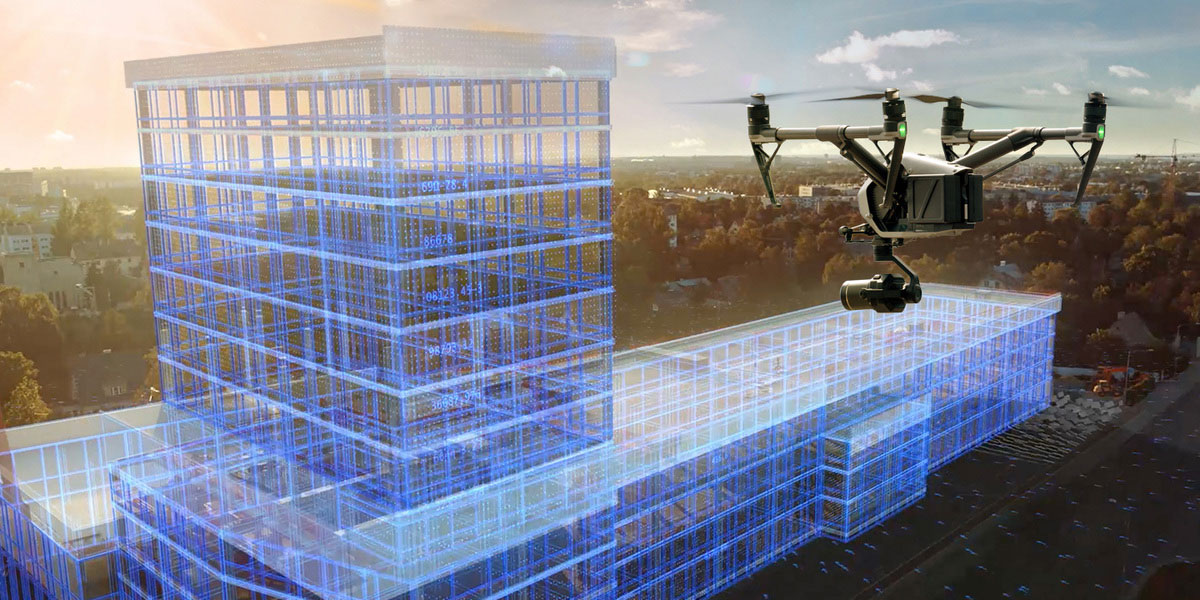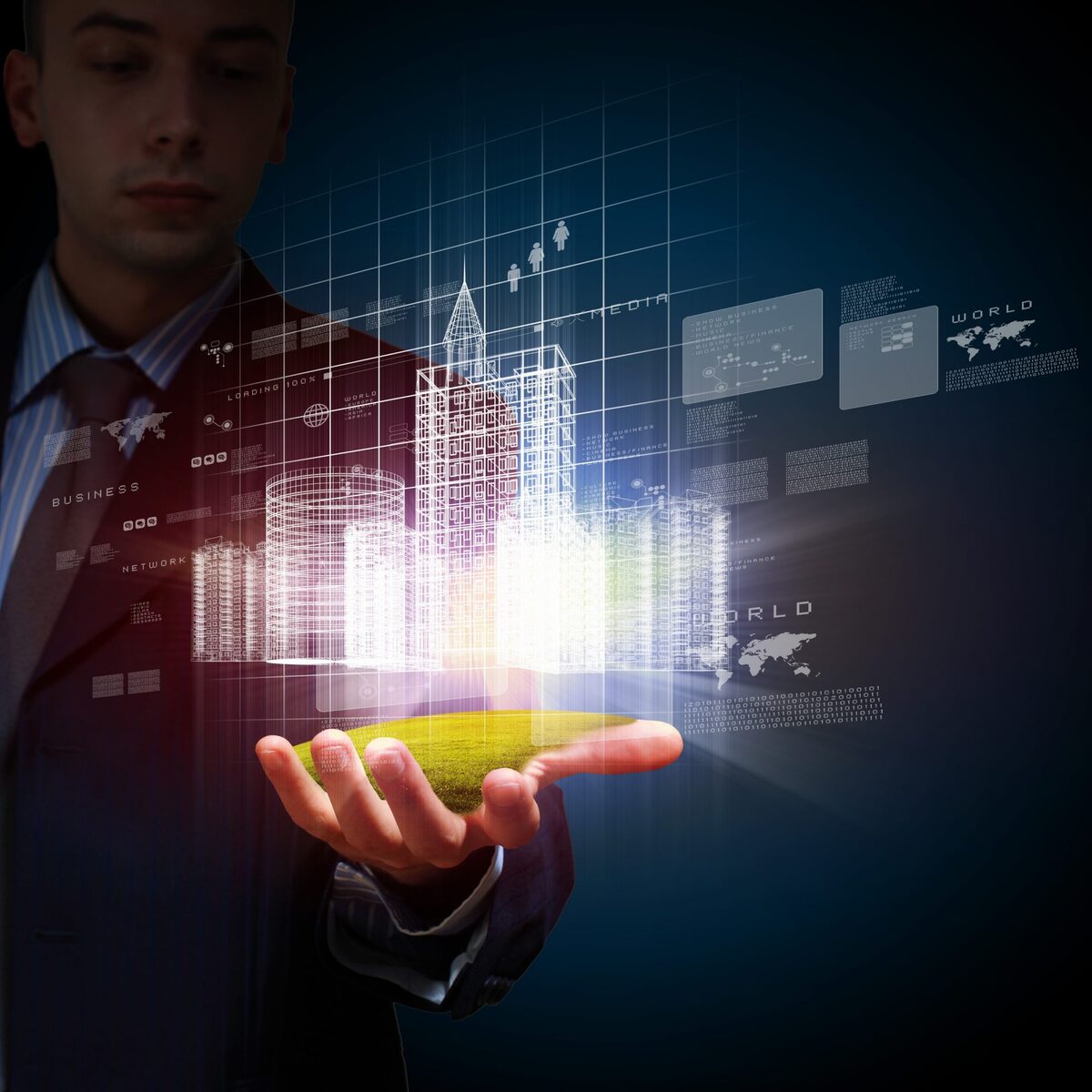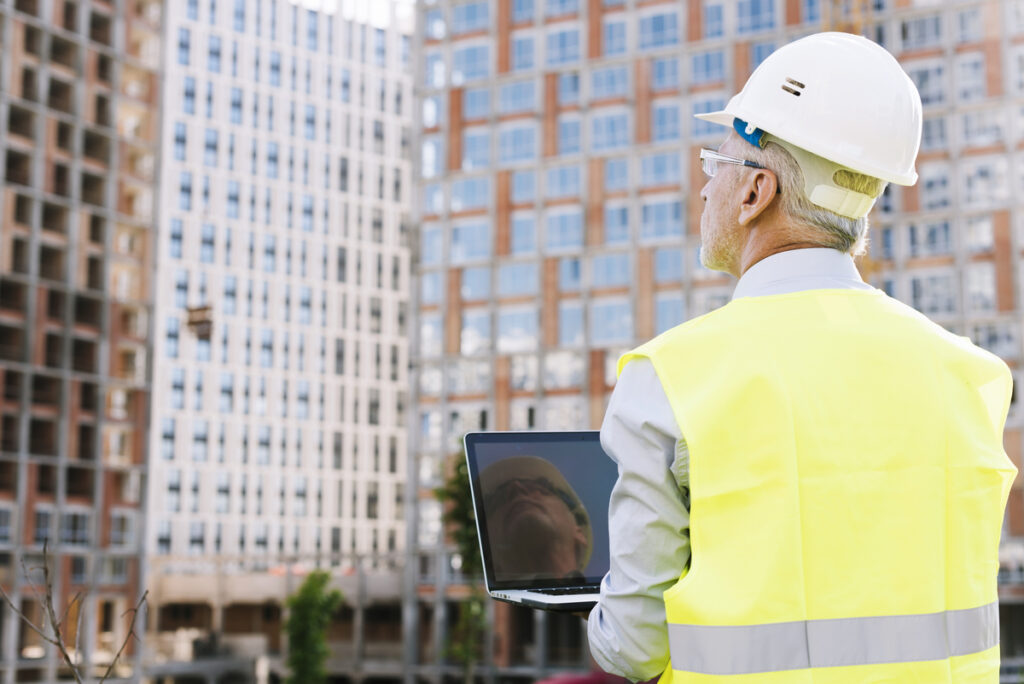The construction industry stands on the cusp of a transformative revolution fueled by the convergence of AI in construction and digital twin technology. According to a report by Research and Markets, the global digital twin market in construction is projected to reach $14.3 billion by 2026, growing at a compound annual growth rate (CAGR) of 38.1% from 2021 to 2026. This exponential growth underscores the industry’s recognition of the potential of AI twin technology to revolutionize construction processes and outcomes.
As construction projects become increasingly complex and demanding, the need for innovative solutions to enhance efficiency, productivity, and sustainability has never been greater. AI twin technology offers a paradigm-shifting approach, providing real-time insights, predictive analytics, and autonomous decision-making capabilities that empower stakeholders to optimize every aspect of the construction lifecycle.
In this era of digital transformation, AI twin technology promises to unlock unprecedented opportunities for the construction industry, from optimized planning and design to streamlined execution and management. By harnessing the power of AI and digital twins, construction companies can navigate the challenges of a rapidly evolving landscape and emerge as leaders in the creation of smarter, more resilient built environments.
Table of Contents
Understanding AI Twin
AI Twin, also known as a digital twin powered by artificial intelligence (AI), is a cutting-edge technology that revolutionizes the way we design, simulate, and manage physical assets and systems. Unlike traditional digital twins, which are virtual replicas of physical objects or processes, it incorporates advanced AI algorithms to enhance its capabilities for real-time analysis, prediction, and decision-making.
At its core, an AI Twin is a dynamic digital representation of a physical asset or system, such as a building, infrastructure network, or manufacturing plant. It leverages a variety of data sources, including sensor data, IoT devices, historical records, and external data feeds, to continuously update and refine its understanding of the physical counterpart. Through sophisticated AI algorithms, it can simulate various scenarios, predict future behaviors, and optimize performance in ways that were previously unimaginable.
Suggested article to read: Artificial Intelligence or AI in Architecture; Guide to 2025
Components and Functionalities of AI Twin
- Data Integration: AI Twin aggregates data from diverse sources, including sensors, IoT devices, databases, and external sources such as weather forecasts and supply chain data. This data fusion enables a comprehensive view of the physical asset or system in real time.
- Machine Learning and Predictive Analytics: AI Twin employs machine learning algorithms to analyze historical data and identify patterns, trends, and anomalies. By continuously learning from new data, it can predict future behaviors, anticipate maintenance needs, and optimize performance.
- Real-time Monitoring and Control: AI Twin provides real-time monitoring of the physical asset or system, enabling stakeholders to track performance metrics, detect issues early, and take proactive measures to prevent downtime or failures.
- Simulation and What-if Analysis: AI Twin allows users to simulate various scenarios and conduct what-if analysis to evaluate the potential impact of changes or interventions. This capability enables informed decision-making and risk management.
- Autonomous Decision-making: In some advanced implementations, AI Twin can autonomously make decisions and initiate actions based on predefined rules or objectives. This autonomy streamlines operations, reduces human intervention, and improves efficiency.
Suggested article to read: Digital Twin Technology in Construction & Building; Guide to 2025
Examples of AI Twin Applications
- Smart Buildings: AI Twins are used to optimize energy consumption, enhance occupant comfort, and improve maintenance processes in smart buildings. By analyzing occupancy patterns, environmental conditions, and equipment performance, AI Twins can optimize HVAC systems, lighting controls, and predictive maintenance schedules.
- Intelligent Infrastructure: In transportation and urban planning, AI Twins are deployed to monitor and manage infrastructure assets such as roads, bridges, and utilities. By analyzing traffic patterns, weather conditions, and structural health data, AI Twins can optimize traffic flow, predict maintenance needs, and enhance safety.
- Smart Manufacturing: In manufacturing environments, AI Twins are employed to monitor production processes, optimize equipment utilization, and ensure product quality. By integrating data from sensors, production systems, and supply chain sources, it can detect defects, predict equipment failures, and optimize production schedules.
AI Twin represents a paradigm shift in how we interact with and manage physical assets and systems. By combining the power of artificial intelligence with digital twin technology, it enables unprecedented insights, optimizations, and efficiencies across a wide range of industries and applications.
Suggested article to read: Artificial Intelligence or AI in Building; Guide to 2025

Role of AI Twin in Automated Construction
Automated construction, also known as robotic construction or construction automation, is a rapidly evolving field that leverages robotics, AI, and advanced automation technologies to revolutionize the construction industry. AI Twin plays a pivotal role in automated construction by providing real-time insights, predictive analytics, and autonomous decision-making capabilities, thereby optimizing construction processes and enhancing project outcomes. Here’s a closer look at the role of AI Twin in automated construction:
- Optimized Planning and Design: AI Twin facilitates optimized planning and design of construction projects by analyzing historical data, simulating various design scenarios, and identifying the most efficient and cost-effective solutions. Through machine learning algorithms, it can learn from past projects and recommend design modifications to improve efficiency, sustainability, and safety.
- Real-time Monitoring and Control: During the construction phase, AI Twin provides real-time monitoring and control of construction activities, equipment, and resources. By integrating data from IoT sensors, drones, and other monitoring devices, it enables project managers to track progress, identify bottlenecks, and proactively address issues before they escalate. This real-time visibility improves project coordination, reduces delays, and enhances overall productivity.
- Predictive Maintenance and Risk Mitigation: AI Twin utilizes predictive analytics to anticipate equipment failures, schedule maintenance activities, and mitigate risks on construction sites. By analyzing sensor data and historical maintenance records, it can predict when equipment is likely to malfunction and recommend preventive maintenance actions. This proactive approach minimizes downtime, reduces repair costs, and ensures smooth project execution.
- Quality Control and Defect Detection: AI Twin enhances quality control and defect detection in construction projects by analyzing sensor data, images, and other inputs to identify deviations from design specifications. Through computer vision algorithms and machine learning techniques, it can detect defects such as cracks, uneven surfaces, and structural abnormalities, enabling early intervention and corrective actions to maintain construction quality.
- Resource Optimization and Efficiency: AI Twin optimizes resource utilization and improves operational efficiency on construction sites by dynamically adjusting schedules, allocating resources, and optimizing workflows based on real-time data and predictive insights. By optimizing equipment usage, material logistics, and labor allocation, it helps minimize waste, reduce costs, and maximize productivity throughout the construction lifecycle.
- Continuous Improvement and Learning: AI Twin facilitates continuous improvement and learning in automated construction by capturing data, analyzing performance metrics, and identifying opportunities for optimization. By leveraging feedback loops and iterative processes, it can adapt to changing conditions, refine its algorithms, and continuously optimize construction processes over time.
AI Twin serves as a critical enabler of automated construction by providing real-time insights, predictive analytics, and autonomous decision-making capabilities that optimize planning, execution, and management of construction projects. By leveraging it technology, construction companies can improve productivity, enhance quality, and deliver projects more efficiently and cost-effectively in the increasingly digitized and automated construction landscape.
Suggested article to read: AI or Artificial Intelligence in Project Management; 2025 Review

Key Features and Capabilities of AI Twin in Construction
AI Twin, as a digital twin powered by artificial intelligence (AI), offers a range of features and capabilities that are instrumental in transforming the construction industry. Here are some key features and capabilities of it in construction:
- Real-time Monitoring and Data Integration:
- AI Twin integrates data from various sources such as sensors, IoT devices, and construction management systems to provide real-time monitoring of construction sites and assets.
- It offers a comprehensive view of the construction project by aggregating data on progress, resource utilization, equipment status, and environmental conditions.
- Predictive Analytics and Forecasting:
- AI Twin utilizes machine learning algorithms to analyze historical data and predict future outcomes such as project delays, cost overruns, and safety incidents.
- It enables proactive decision-making by identifying potential risks and opportunities early in the construction process.
- Simulation and What-if Analysis:
- AI Twin enables construction managers to simulate various scenarios and conduct what-if analysis to evaluate the impact of different decisions on project outcomes.
- It helps optimize construction schedules, resource allocation, and logistics by identifying the most efficient strategies and mitigating potential risks.
- Quality Control and Defect Detection:
- AI Twin employs computer vision and image processing techniques to detect defects, deviations from design specifications, and safety hazards on construction sites.
- It enhances quality control processes by identifying issues in real time and enabling timely interventions to maintain construction quality.
- Resource Optimization and Workflow Automation:
- AI Twin optimizes resource utilization and automates repetitive tasks by analyzing data on equipment usage, material availability, and labor productivity.
- It improves operational efficiency by dynamically adjusting schedules, allocating resources, and optimizing workflows based on real-time data and predictive insights.
- Collaborative Decision-making and Communication:
- AI Twin facilitates collaborative decision-making and communication among project stakeholders by providing a shared platform for accessing and analyzing construction data.
- It enhances transparency, accountability, and coordination among architects, engineers, contractors, and clients throughout the construction lifecycle.
- Continuous Improvement and Learning:
- AI Twin supports continuous improvement and learning by capturing data, analyzing performance metrics, and identifying opportunities for optimization.
- It enables construction companies to adapt to changing conditions, refine their processes, and continuously improve project outcomes over time.
In summary, AI Twin offers a range of features and capabilities that enable construction companies to enhance productivity, improve quality, and mitigate risks throughout the construction lifecycle. By leveraging it technology, construction projects can be executed more efficiently, cost-effectively, and safely in the increasingly complex and dynamic construction environment.
Suggested article to read: 13 Inspiring Digital Twin Examples
Challenges and Considerations
Challenges and Considerations in Implementing AI Twin Technology in Construction
- Data Quality and Availability: One of the primary challenges in implementing AI Twin technology in construction is ensuring the quality and availability of data. Construction projects generate vast amounts of data from various sources, including sensors, drones, and BIM models. However, this data is often fragmented, incomplete, or inconsistent, making it challenging to create accurate and reliable AI Twins. Addressing data quality issues and establishing robust data governance processes are essential for successful implementation.
- Interoperability and Integration: Construction projects involve numerous stakeholders, each using different software tools and platforms for design, planning, and project management. Achieving interoperability and seamless integration between these systems is a significant challenge when implementing AI Twin technology. Standardization of data formats, APIs, and interoperability protocols is necessary to facilitate data exchange and collaboration among stakeholders.
- Privacy and Security Concerns: The use of AI Twin technology in construction raises concerns about data privacy, security, and intellectual property rights. Construction data, including building designs, sensor data, and project documentation, may contain sensitive information that needs to be protected from unauthorized access, manipulation, or disclosure. Implementing robust cybersecurity measures, data encryption, and access controls are essential to mitigate privacy and security risks.
- Skill Shortages and Training Needs: The adoption of AI Twin technology requires construction professionals to acquire new skills in data analytics, machine learning, and AI algorithms. However, there is currently a shortage of skilled workers with expertise in these areas within the construction industry. Addressing skill shortages and providing training programs to upskill the workforce are critical considerations for successful implementation of AI Twin technology.
- Cost and Return on Investment (ROI): Implementing AI Twin technology in construction involves significant upfront costs, including investment in hardware, software, data infrastructure, and training. Construction companies may face challenges in demonstrating the return on investment (ROI) of AI Twin implementations, especially in the early stages where tangible benefits may not be immediately apparent. Conducting thorough cost-benefit analyses and identifying clear value propositions are essential for securing buy-in from stakeholders and securing funding.
- Regulatory and Legal Compliance: Construction projects are subject to various regulatory requirements, building codes, and industry standards that govern design, construction, and safety practices. Implementing AI Twin technology in compliance with these regulations poses challenges related to data privacy, liability, and accountability. Ensuring that its implementations comply with relevant regulations and standards is crucial for avoiding legal risks and maintaining trust among stakeholders.
- Change Management and Cultural Resistance: Introducing AI Twin technology may face resistance from construction industry stakeholders who are accustomed to traditional ways of working. Resistance to change, fear of job displacement, and cultural barriers within organizations can hinder the adoption of it. Effective change management strategies, stakeholder engagement, and communication efforts are essential for overcoming resistance and fostering a culture of innovation and collaboration.
While AI Twin technology holds immense potential to transform the construction industry, implementing it successfully requires addressing a range of challenges and considerations related to data, interoperability, privacy, skills, costs, regulations, and organizational culture. By proactively addressing these challenges and leveraging best practices, construction companies can unlock the full benefits of AI Twin technology and drive innovation, efficiency, and sustainability in the built environment.
Suggested article to read: Top 7 Digital Twin Software in 2025

Future Trends and Opportunities
Future Trends and Opportunities in AI Twin Technology for Construction
- Integration with Emerging Technologies: AI Twin technology is expected to integrate with emerging technologies such as augmented reality in construction (AR), virtual reality (VR), and mixed reality (MR) to create immersive digital environments for construction planning, design, and collaboration. This integration will enable stakeholders to visualize and interact with construction projects in new ways, leading to improved decision-making and project outcomes.
- Advanced Robotics and Automation in Construction: The future of AI Twin in construction will likely involve increased integration with advanced robotics and automation systems. This includes autonomous construction vehicles, robotic 3D printers, and drones equipped with AI-powered sensors for tasks such as site surveying, material transportation, and building assembly. This convergence of AI Twin with robotics and automation will revolutionize construction processes, making them faster, safer, and more efficient.
- AI-driven Sustainability Solutions: AI Twin technology will play a crucial role in advancing sustainability in the construction industry. By analyzing environmental data, energy usage patterns, and material lifecycle impacts, AI Twins can optimize building designs for energy efficiency, minimize waste generation, and reduce carbon emissions. Additionally, AI Twins can help identify opportunities for renewable energy integration, green building certification, and sustainable construction practices.
- Enhanced Predictive Analytics: Future AI Twins will leverage advancements in predictive analytics and machine learning algorithms to provide more accurate and actionable insights for construction project management. It will be capable of predicting construction risks, optimizing resource allocation, and forecasting project delays with greater precision, enabling proactive decision-making and risk mitigation strategies.
- Blockchain-enabled Data Management: The integration of AI Twin technology with blockchain-enabled data management systems holds promise for enhancing data security, transparency, and traceability in construction projects. Blockchain technology can be used to securely store and manage construction data, including building plans, permits, material certifications, and project documentation. It can then leverage this blockchain-enabled data infrastructure to access real-time, trustworthy information for decision-making and analysis.
- Adoption of Generative Design: AI Twin technology will facilitate the adoption of generative design methodologies in construction, where AI algorithms explore vast design possibilities and generate optimal solutions based on specified criteria and constraints. This approach will enable architects and engineers to explore innovative design alternatives that maximize performance, efficiency, and cost-effectiveness, leading to more sustainable and visually appealing built environments.
- Global Collaboration and Knowledge Sharing: AI Twin platforms will enable global collaboration and knowledge sharing among construction industry stakeholders, fostering innovation, best practices, and lessons learned from projects around the world. Through AI-powered analytics and data visualization tools, construction professionals can access insights from diverse projects, benchmark performance metrics, and collaborate on solving common challenges, ultimately driving continuous improvement and excellence in the construction industry.
In conclusion, the future of AI Twin technology in construction holds tremendous potential for driving innovation, sustainability, and efficiency in the built environment. By leveraging emerging technologies, advanced analytics, and collaborative platforms, it will enable construction companies to tackle complex challenges, deliver higher-quality projects, and create more resilient and sustainable cities for future generations.
Suggested article to read: Sustainable Construction | Blockchain in construction
Conclusion
The trajectory of AI Twin technology in the construction industry promises a profound transformation, ushering in an era of unprecedented innovation and efficiency. As they evolve, they will become indispensable tools for optimizing every facet of construction projects, from planning and design to execution and management. By integrating with emerging technologies like augmented reality, robotics, and blockchain, will unlock new possibilities for collaboration, visualization, and data management, driving sustainable growth and resilience in the built environment.
However, the realization of this potential is not without its challenges. Issues such as data quality, interoperability, and regulatory compliance must be addressed to ensure the successful implementation of AI Twin technology. Moreover, overcoming cultural resistance and fostering a culture of innovation will be essential for widespread adoption within the construction industry.
Despite these challenges, the future of AI Twin technology in construction is bright, offering unprecedented opportunities for industry stakeholders to revolutionize the way we build and manage our infrastructure. By embracing these trends and harnessing the power of its technology, construction companies can position themselves at the forefront of innovation, driving sustainable development and delivering value to society for generations to come.
Suggested article for reading:
Sustainable Development Goals in Construction Industry; Guide 2025
Decarbonizing Construction; A Sustainable Future Ahead (2025 Solution)
Resources:
Twin AI | AI-Twin | Gemelo AI | Medium | Twin.So | Twin Science | Fast Company | My.Club | toobler.com
For all the pictures: Freepik



